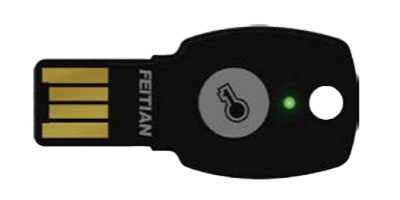What Is a Security Key?

A Security Key refers to a device or code used for information security and access control.
Functioning as evidence either in the form of a physical device or software-based, it enables authentication demands stronger than mere passwords. Access to accounts or systems is not permitted without the presence of a security key, thereby preventing unauthorized access and enhancing the security of accounts.
Additionally, the use of security keys alleviates the need for users to memorize complex passwords (passwordless), reducing the risk of weak passwords or reusing the same password across multiple services. This results in improved security and a decrease in issues associated with passwords.
However, there is the possibility of losing or having physical security keys stolen. In cases of loss or theft, swift measures need to be taken to protect access to accounts. In the event of a lost security key, understanding the account recovery process is crucial.
Uses of Security Key
Security keys are employed to strengthen information security and establish access control.
Cloud Services, Cloud Authentication Platforms
In companies providing cloud services or data storage services, it is common for users to use security keys to access their accounts.
Security keys control access to data stored in the cloud, contributing to the encryption and protection of data. Without a security key, access to the account is denied, thus maintaining the confidentiality of data.
Principle of Security Key
The principle of a security key is primarily based on Public Key Infrastructure (PKI) and the authentication process. Public Key Infrastructure is an encryption method that uses two keys to encrypt and decrypt information. These two keys are known as the public key and the private key.
For each user or device, a security key is generated, and a pair of public and private keys is created. The public key is generally shared online, while the private key is securely stored within the user or device.
When a user attempts to log in or access a system, the service or system requests a security key. In response, the user provides either a physical security key or a software-based key. The service system uses the security key to generate random encrypted data, attempting to verify the encryption by using the private key.
Types of Security Key
The main types of security keys are as follows.
1. Multi-Factor Authentication Key
This is a security key (such as the FIDO security key) that combines multiple authentication factors to enhance account security. Two or more factors (possession, knowledge) are used. In addition to a password, methods include sending a one-time password to an email address.
2. Biometric Authentication Key
Biometric authentication keys, generated based on physical characteristics, authenticate users using their biometric information, providing high-security strength.
Fingerprint authentication scans the user’s fingerprint for authentication. Other methods include security keys that use facial recognition or voiceprints, among various types. Biometric authentication keys are used as an alternative to passwords (passwordless) and offer high authentication security.
3. USB Security Key
A USB security key is a physical device with embedded encryption. Users insert this device into a computer for use. USB security keys are based on public key cryptography and are used in login and authentication processes.